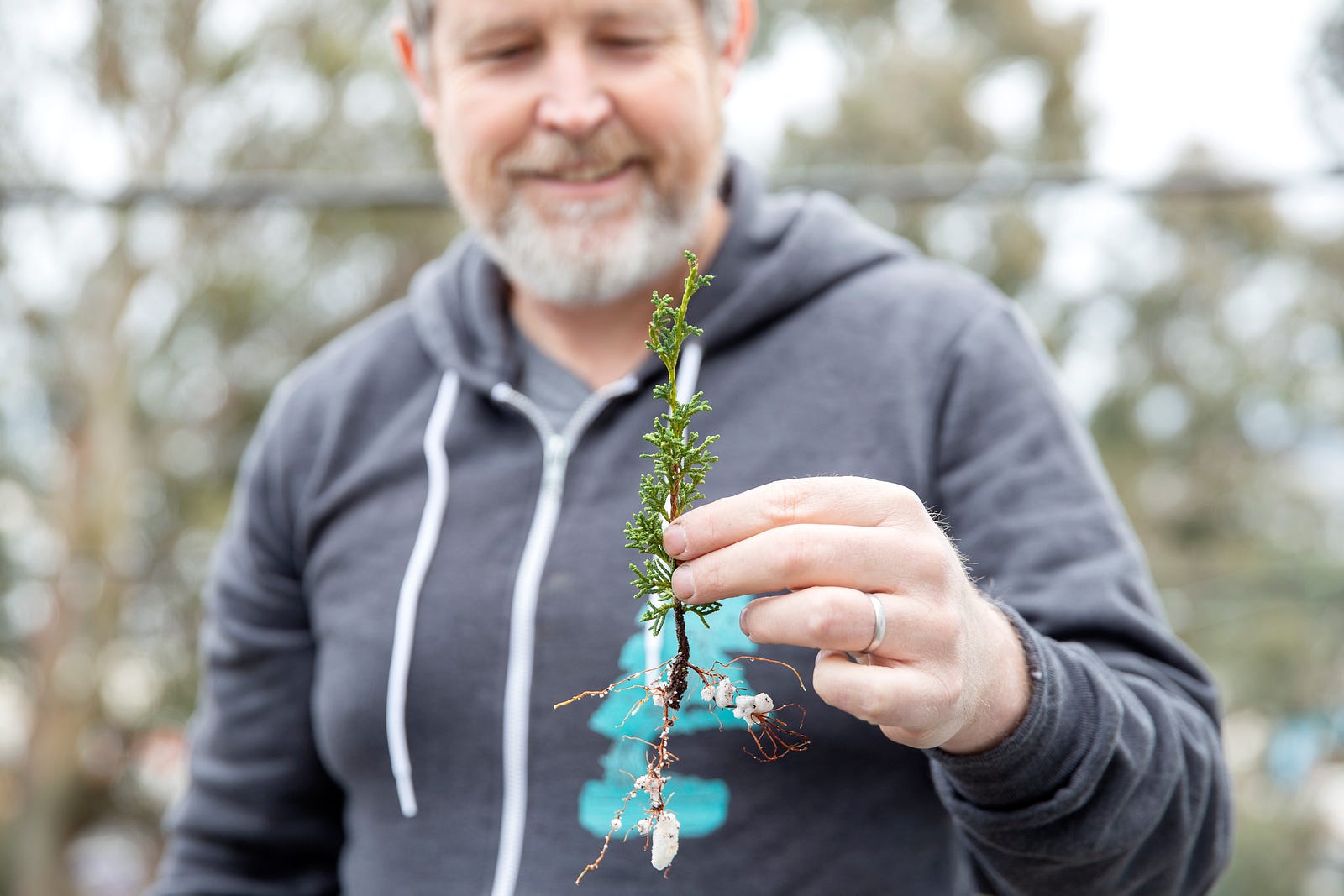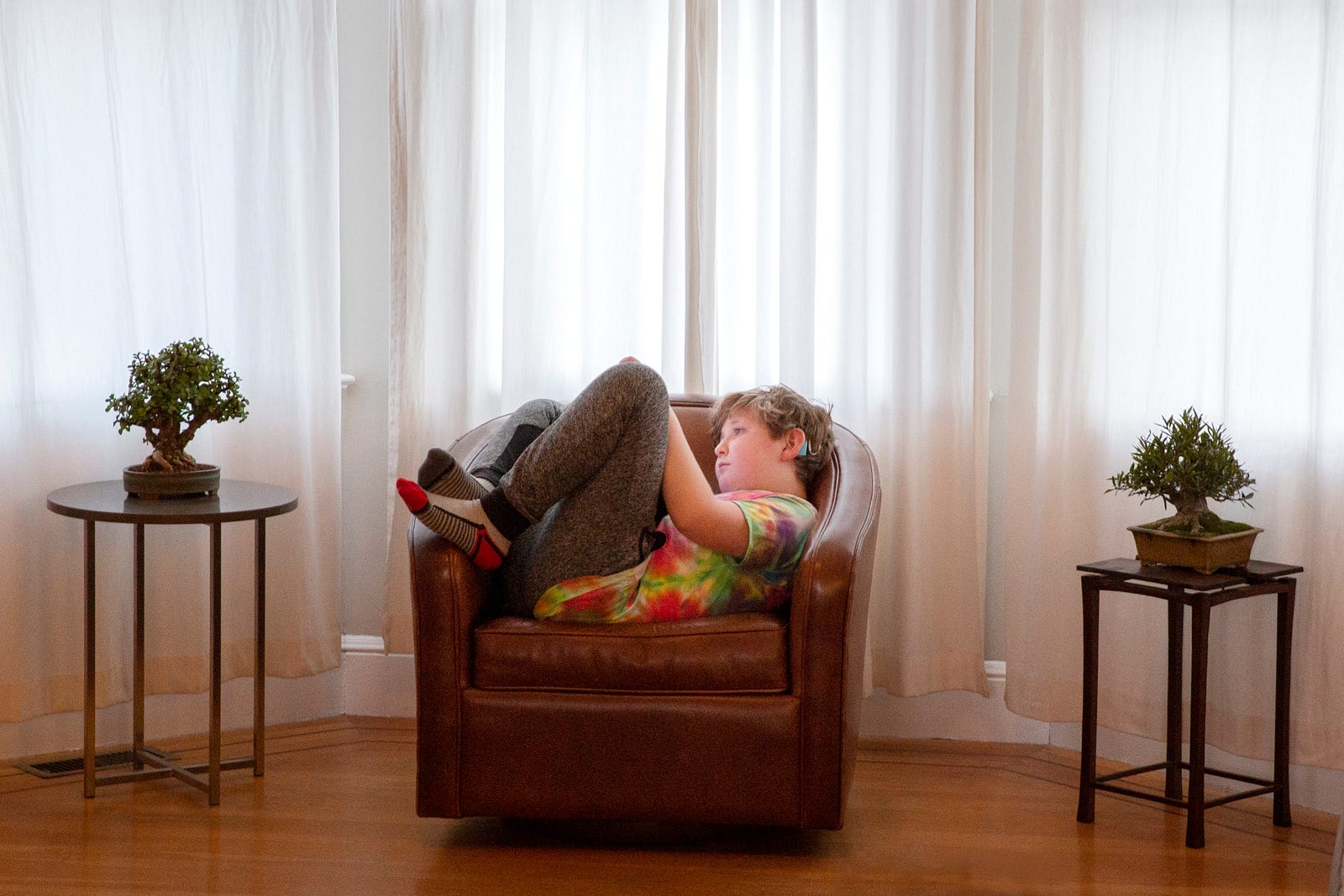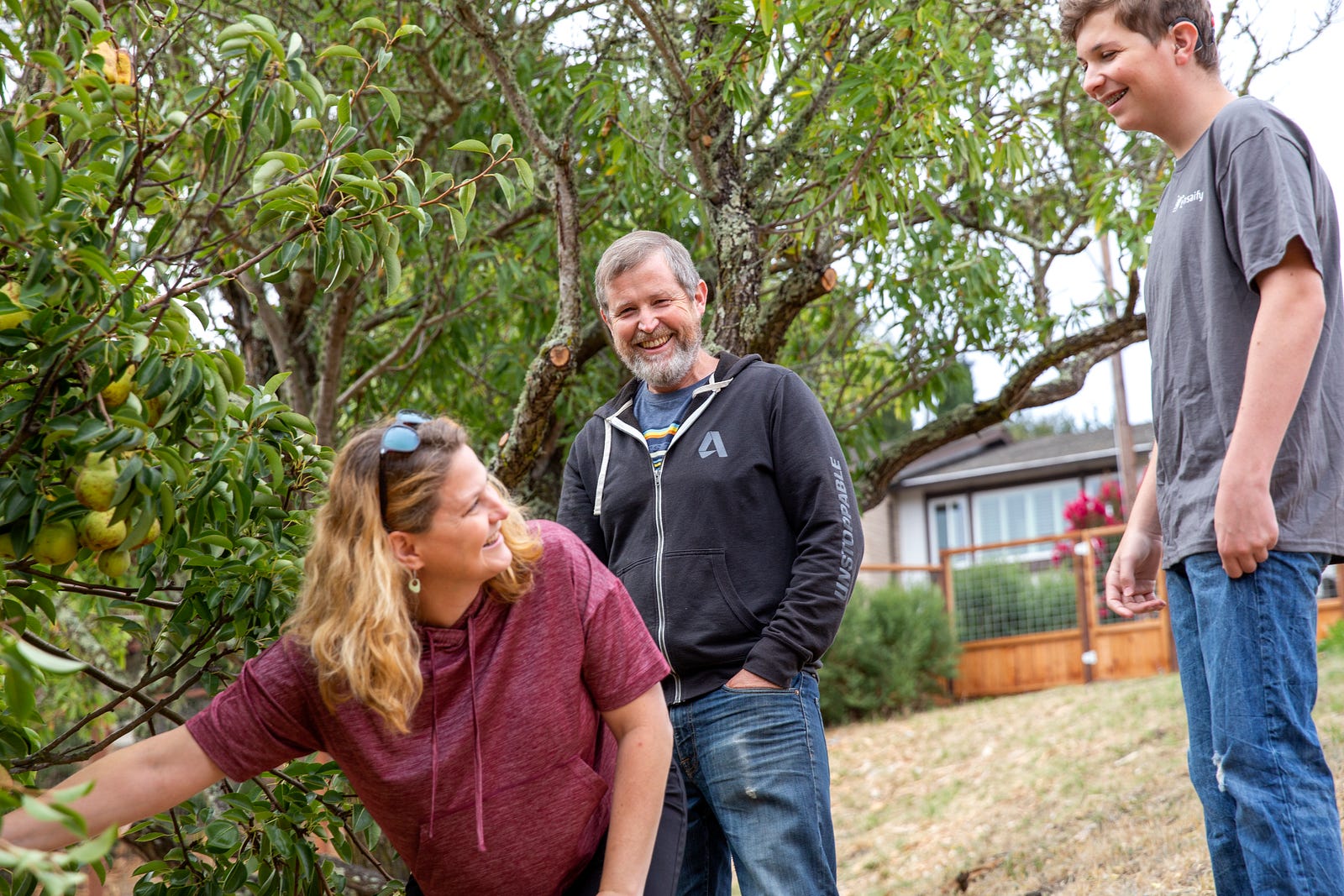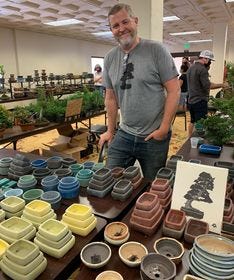After years of talking about it, my husband Eric and I finally started a business in late 2019. We crafted a mission and business plan, conducted audience and market research, connected with a designer and web developer, and began developing our product. We debated seeking investors vs. bootstrapping and decided that we would bootstrap, ensuring that we would retain full creative, operational, and fiduciary control. Our website launched in 2020, and we’ve spent the past two years slowly growing a beautiful business together. We’ve made plenty of mistakes, had quite a few happy accidents, and ultimately have learned so much about entrepreneurship and starting a business. I wanted to welcome 2022 by sharing our experiences with anyone considering starting their own small business this year. While our specific business may be very different from yours, the lessons we’ve learned will definitely apply to you at some point in your entrepreneurial journey.
1: START TODAY!
Have you ever heard this proverb, attributed to ancient China? “The best time to plant a tree was 20 years ago. The second best time is now.” It’s generally interpreted to mean that if you want to succeed at something in the future, the best time to act is now, in the present. Eric shared his business ideas with me years before we finally decided to start Bonsaify. While we may have gained experience and wisdom in the intervening years between ideation and actualization, I wish we had stopped waiting and taken the leap into entrepreneurship sooner. Looking back, the only thing that really held us back, was our own FUD — fear, uncertainty, and doubt. What’s holding you back, other than yourself?
2: WRITE IT DOWN
Ideas come when you least expect them — while on a run or walk, laying on the yoga mat, prepping a meal, sipping coffee, taking a shower. Don’t judge your ideas immediately and toss them aside; give them space to ruminate and develop by writing them down!
3: GET A WHITEBOARD
Quickly followed by, “Use a Whiteboard”! This is a great tool for quickly getting your ideas out, and making changes rapidly, without committing too much time to technology, template, or format. We have two whiteboards set up, one in our operations (office) space, and a second in our production space. This enables us to ideate and prioritize the most important to-dos and plans for separate parts of the business.
4: GO TECH-FREE
Does it ever feel like there are an overwhelming number of digital tools available to entrepreneurs? It’s because there are: project management tools; work organization tools; website tools; email communication tools; customer relationship management tools; and accounting tools (to name a few broad categories). Hubspot has shared that marketers alone use on average more than 12 different tools, and some are using more than 31 tools to manage campaigns and data!
Every start-up or small business will have a different set of digital tools and software that make up its tech stack. These tools make a difference, and we’re not suggesting that you drop any of them. The point of today’s resolution is to consciously take stock and look for opportunities to simplify for a few hours or a few days. Can going tech-free for a few hours or days really help an entrepreneur build a successful business? Yes, it can. Take your thoughts, plans, dreams, and goals offline — on a walk or to a journal (or whiteboard).
5: RESEARCH
Market Research…can you ever really do too much? When we began planning for Bonsaify’s launch, I spent a lot of time looking at our competitor’s websites and social media accounts. I divided the competition into different categories; reviewed their voice, design, and product descriptions; analyzed their search and promotion strategies. Eric and I agreed on which part of the market we were going to focus on, and we built out content, product, and marketing plans from there. If I hadn’t already known it before we launched Bonsaify, the past few years have taught me you can never do too much research to understand your customers, your competition, and your market.
6: IDENTIFY YOUR STRENGTHS
Is anyone great at everything? Is each of us great at one thing [at the least]? When we first began Bonsaify, Eric and I thought about what type of work brought us joy and motivation; areas where colleagues and friends had praised us in the past; and tasks that made us cringe. We divided up the “must do’s” between us based on the strengths we identified…and had space to add a few “want to do’s” on top. One example: I knew I was good with wordplay and could establish an authentic voice for our brand that would connect with our customers. I took charge of all communications. I wanted to learn more about SEO and building audiences organically, so I took that on as an additional area of focus. I’m still learning, and I’m loving it! Although my full-time job doesn’t require me to have these skills, I do feel that I can bring extra passion and experience to my “day job” that benefits my colleagues. A true win-win!

7: OUTSOURCE
“Outsource is the secret sauce.” — Dory Schrader
Eric and I realized early on that even though our business is small (Eric plus whatever few hours I can provide outside my full-time gig), bootstrapped (e.g. our budget is tiiight), and early stage, we wouldn’t be able to do everything ourselves. After organizing around our individual strengths and time availability, we highlighted a few key areas where we needed to outsource. Those included accounting, legal (LegalZoom thank you!), greenhouse management, parts of product development (e.g. 3D modeling for concrete pots), and brand design. Any financial investments in these areas have been returned exponentially, either through time back, piece of mind, or trackable ROI $$. OUTSOURCE when you need to!
8: BOOTSTRAP
Is this controversial? Remember, these are our reflections and learnings from the start of our small, family-owned and operated business. We started Bonsaify from our own personal finances in the Fall of 2019, which meant we started small and slow. Our first few investments were very basic — before even renting a greenhouse space, we ordered seeds and the flats/trays/containers we’d need for seedlings and cuttings; handled the legal and regulatory aspect of our business, and asked a designer we met through a friend to help us with our brand and logo design. We purchased a URL…and not much beyond that. We planned what we’d need to spend each month to nurture the business and grow, and brainstormed ways to earn some revenue to counter costs. There’s much more to our bootstrapping story, which I intend to share someday. For now, I’ll leave off by sharing that we ended 2021 with a full quarter of monthly sales covering monthly costs. The business is moving in the right direction, and bootstrapping continues to be our preference, to retain full control of our goals, our customers’ experience, and our destiny.
9: FOCUS
Even in our niche industry — bonsai in the U.S. — there was no limit to the potential paths we could take when we began Bonsaify. Grow big trees or small; sell starters and pre-bonsai or only trained bonsai; focus on species best for indoors, outdoors, or both; ceramic or concrete pots, mass-produced or locally made; offer virtual workshops and seminars; how much related and peripheral merchandise to offer; and more decisions that were focused just on product development and offerings!
We also had to think about which social channels to invest in; where to focus on building community, audience, and engagement; which infrastructure tools to subscribe (e.g. Shopify, Klaviyo, Trello, LegalZoom). It was easy to feel overwhelmed, and we learned that we needed to FOCUS on one decision at a time to keep making progress and to move the business forward. As a marketer, I read “Traction” by Gabriel Weinberg and Justin Mares, and overall, I recommend it. The Bullseye framework works, and it helped me determine the three traction channels I needed to focus on in 2021 to drive our intended growth.
10: CUSTOMER EXPERIENCE
Building our business has been all about customer experience. We’re not just focused on the quality of our products, but on how we communicate with our customers, building authentic relationships; on how we pack and ship our products, throwing in a sweet little extra to bring a smile to our customers face as they open their box; and on speed and detail in responding to customer questions, concerns, and ideas. We are hyper-focused on our customers. They know it; they love us for it and they’re loyal because of it.
Comment posted on YouTube: “Today just got my root over rock black pine and small juniper..let me tell you that was the healthiest most well packed set of trees I have ever got shipped exp in winter in Michigan…tysm I’ll def be a repeat customer…”
Email received: “Everything I’ve ordered from you has been outstanding. The way you pack the plants for shipping and the quality is way better than anything I’ve purchased online. I never question if the roots are damaged, trunks are split, etc. I can tell that you care about your plants just by the way they look. Never going to order from anyone else. Thank you.”
Message sent via Instagram: “Glad to see your business is thriving. Great products, excellent service, and quality educational videos. Wishing you great success going forward…”
11: THINK POSITIVE
I’m not typically associated with the “half glass full” mentality, and even I have to admit that working with Eric on Bonsaify has helped me see the value of positive thinking. We’ve had been plenty of frustrating, zero dollars, plans falling through, fallback to Plan D, days since we launched Bonsaify. It would have been easy to fall into catastrophizing, planning to fail, and all that bad juju. Perhaps being a wife & husband team (with a little help from our sons and good family friends) helped us to focus on the good things, the opportunities; to trust that we were the right people to be successful in this particular business and that if we continued to focus and push forward, we would be [more than] fine. We hold tight to humor and laughs especially in the face of setbacks. We find excitement and joy in each customer engagement — emails, phone calls, likes/comments/shares on social media, and of course, orders — and that translates easily into gratitude. Finding and holding on to this positive energy makes it easier to deal with the inevitable problems we face. Being a blindly optimistic Pollyanna still isn’t a good strategy IMO, but I have learned that focusing on each little win and joy in the day-to-day of starting a business definitely helps me push through the tough stuff without complaint. I definitely believe that if you can hold to positive thinking, you can persevere as you launch a new business.
12: MANIFEST
Eric had a vision for Bonsaify long before we had a name, a logo, or a website for the business. He manifested this business, sharing his vision with me, bringing me along, until I could clearly see it and could help him draft a mission, and ultimately, a business plan. We take time every week to review how our business is growing, and continue to manifest our vision, mapping out short- and long-term goals, and picturing where we want Bonsaify to be in 2022 and beyond. You CAN manifest your ideas, dreams, and goals into a whole new business. Eric did it, and I’m so happy to be along for the journey.
13: EXERCISE
There are nights when Eric crashes into bed before 8:00 pm because starting and running a new business is #sodamnhard. I’m sure he’s not the only entrepreneur pushing himself to exhaustion. For me, the antidote to exhaustion is exercise; actually, it’s mindful movement. Whether it’s yoga (Yoga with Adriene is my jam), a walk, run, or bike ride, or an Orangetheory Fitness class, I take at least 20 minutes each day for my body and mind to connect. It offers me a break, helps me rebalance between professional and personal stressors, and provides a daily refresh/reset. I cannot advocate enough for the power of exercise!

14: SLEEP
Forbes published an article in July 2021, “Entrepreneur Sleep Deprivation: A Work Trend That Needs To Be Put To Bed”. Sleep isn’t a sign of weakness, and keeping a 10:00 pm — 6:00 am (or 9–5, 11–7) schedule doesn’t mean you lack passion, drive, or motivation. Sleep is essential to life. Do you want to have the energy and stamina to continue producing innovative and market-changing products and services? Your brain and your body need sleep.
I have a very difficult time falling asleep, and an even worse time staying asleep. I am a light sleeper (until I’m not, something that only the insomniac → truly exhausted can understand) and I am easily awoken by any noise, light, or even my own thoughts. They break through and BAM I’m awake at 2:00 am. I can feel and see a difference in my productivity, creativity, and physical wellness on those days when I didn’t get enough sleep the night before.
I envy Eric, who has a metronomic internal clock that generally guarantees him 7–8 hours of sleep. But even he can fall prey to his Trello task list entering a REM sleep cycle and jolting him awake at 4:00 am. He’s taught me one way to overcome this is getting into a habit of laying down ahead of when you want to fall asleep, actually giving your mind and body enough time to relax and for sleep to come. That way, even on those stressful mornings when we wake up “too early” we’ve at least gotten some good hours of sleep the night before.
How many people do you know, who wear their exhaustion like a ribbon or medal? As the Forbes article author Jonathan Prichard wrote, “Sleep deprivation shouldn’t be something people brag about like it’s a badge of honor for others to admire, yet that is exactly the culture entrepreneurs live in today.” I agree, and I wish this mentality would change; so many entrepreneurs would be happier and healthier.
15: EAT
I LOVE COFFEE. It can be so easy to fill my mug in the morning with a steaming cuppa, and refill it a few times, telling myself that if I want to get some pre-workday Bonsaify work done, then I don’t have time to make breakfast. But I know that I’m not at my best when I feel jittery and yes a little nauseous, from a body full of caffeine and empty of carbs, proteins, and fats. A simple resolution with simple advice: take time to eat! Our business can only thrive so much as we are thriving.
16: RELAX
I know I’m starting to sound more like the owner of a Zen meditation retreat than an entrepreneur with a young D2C e-commerce business, but don’t give up on these resolutions yet! The only way to move forward is to sit back and RELAX. Take just five minutes to stand up and walk around, lift your shoulders up to your ears and release them a few times, or roll your head around to loosen the muscles in your neck. Or give yourself more time and actually meditate, full-body stretch, or read a chapter of a book — just for fun. I prefer yoga, a massage, or float therapy. There’s science behind this — practicing relaxation techniques such as yoga, deep breathing, massage, or meditation reduces the stress hormones adrenaline and cortisol. And that in turn, can help you focus — which is something we entrepreneurs need! You know what? I think I’m going to pause writing this, shut down my computer, and go do some yoga.

17: ANALYZE
Over the past few years, as we conceived and began our business, we’ve had to become Jill and Jack of all trades. Here are just two examples: Eric had to learn how to operate a greenhouse and manage propagation at scale, and I had to move from a broad conceptual understanding of SEO, SEM, and Google Analytics to actually creating content and doing the optimization for organic search, designing search ads, and using the GA dashboard to inform decisions. It’s this last learning that I believe is the most important — entrepreneurs must take the time to study and understand how their business is performing, to inform strategy, planning, and execution. I am still not an analytics expert, but I am looking at numbers daily (email CTR, GA for search terms, time on page, bounce rates, etc) and using the information available to inform how Eric and I prioritize key aspects of the business such as our content plant, product listings, search ads, email flows, and more.
18: TEST
We didn’t have any budget to test product offerings or marketing decisions when we first began Bonsaify. Even now, we have very little money available to do anything other than create products, support operations and infrastructure, and ship. Fortunately, I’ve learned that you don’t need a big budget to TEST and discover what makes your audience happy. Here is one easy example: initially, I sent one monthly newsletter to our entire email list which included links to new articles, videos, and products. I analyzed the open rate, click-throughs, site activity, and conversion value for each monthly email, and I noticed that certain segments engaged much more with the content, and others with the products. I tested splitting the newsletter into multiple sends — one for VIP customers (those who had made more than 5 purchases); one for winbacks (those who ordered at least once, but not in the last 180 days); and one for newsletter only sign-ups. I made minor changes to the subject and preview lines and tailored the body of the email to each audience. The results speak for themselves — as strong as a 73% open rate, 32% click rate, and 32% active on-site for our VIPs! You can test without a large budget; you just need patience, ideas, and access to data.
19: ITERATE
To maintain a successful business in our niche, we need bonsai pots. Lots and lots of bonsai pots. Mediocre ceramic pots are easy to find; great ones nearly impossible because demand outstrips supply exponentially. So Eric decided to try his hand at making our own bespoke line of pots, using specially treated concrete. He first needed to partner with CAD experts to create the models. This took multiple conversations and versions before he had working models that met his standards. He then needed to have the models 3D printed. The first round of models we had printed were too low resolution; so we had to go back to another printer. Then he had to actually create the molds. You better believe it took more than a few rounds until the molds were “just right”. Next, Eric needed a cement mix that work for the particulars of growing bonsai trees. He researched, formulated, mixed, and poured — it took a few rounds before the consistency, texture, etc. was acceptable for our needs. We also wanted to offer color options — the same process of formulating, mixing, etc. And even after the colors were “golden” he realized that some of the molds weren’t quite right, because the pots would get damaged as he released them from the molds. So back to the drawing board with mold production! More than 9 months after kicking off concrete bonsai container development, we finally had a useable and saleable product that we’re proud of.
For us to successfully develop a line of modern cement bonsai pots, iteration was necessary. Eric had to refine his concept, idea, and process many, many times before he created pots that we both felt represented our brand and our standards. If repetition — “doing the same thing over and over and expecting different results” is insanity, then iteration — “a change made to an existing product, idea, or field” is innovation. That’s why entrepreneurs need to iterate!
20: SMALL, FAST MOVES
A small boat is more nimble and easier to maneuver than a large boat, right? Our small business is similar — Eric and I can change course pretty quickly and easily, without much fuss or worry about the fallout. We learn something new in the morning, and by that night, our website is updated, I’ve changed ad copy, or Eric’s filmed a new YouTube video. One of the advantages to bootstrapping our new business with just one full-time and one part-time employee is that we can make a lot of small changes, quickly. We see this as an advantage — a customer asks if we have a specific product or can help them answer a specific question, and we can have a quick confab before replying with a yes or no. Here’s a specific example. We planned initially to source ceramic pots from a large wholesale producer. We were able to quickly change to partnering with a few local/regional smaller production potters and offer a wider array of pot styles with a more personal approach, plus move toward producing our own cement pots.
21: TAKE BREAKS
When I was in my first year of university, I took a Psych 101 course with Professor James Maas, who coined the term “power nap”. I’ve given the old 20-minute power nap a try many times over the years since taking that class, and it has never worked for me. I agree with the concept of quick revitalization, especially now as a mom, employee, and entrepreneur. So while laying down for a fast nap doesn’t work for me, I do lean on other types of breaks — I’ll sip a cup of steaming hot coffee outside on my back porch, sit on the family room floor and work on a jigsaw puzzle, or I’ll go to my bedroom and do a quick yoga session. None of these need to take longer than 15 minutes, and each provides me with just enough of a buzz to bring me back into high productivity mode. I also try to take a longer and more complete break once a week; on a recent Saturday I enjoyed a physically strenuous and emotionally uplifting 3+ hour hike.

22: CREATE VALUABLE CONTENT
By valuable, I mean content that is interesting and engaging to your customer base, to give them a reason to come back and spend time on your site. Our weekly content plan includes two YouTube videos, one article (either something more advanced for active bonsai enthusiasts or something more basic for our general interest audience), and one educational social post. I fill in the rest of our publishing calendar with product posts or bonsai tree pictures that I know bonsai enthusiasts love! Our focus has been on building engaged audiences through YouTube, a newsletter email list, Instagram, and Facebook. And we’re doing it all through great content. Do you consider this guide valuable? I know the content is relevant to the audience I am targeting (hello, entrepreneurs looking to bootstrap their own business!) but it’s up to you to tell me if the content is relevant and valuable.
23: ALWAYS BE LEARNING
“I WILL ALWAYS KEEP LEARNING.” It’s written in the “About” section of my Linkedin profile, and I mean it. in 2021 I completed the Google Analytics for beginners certification because I need to understand GA to help Bonsaify grow. I’m always researching, reading, and adopting new approaches to supporting our business, based on what I’ve learned. The lifelong learning mindset is essential for an entrepreneur, small business owner, or frankly, anyone who wants to make an impact. For example, I look at our content strategy and execution as an opportunity to learn what our audience finds valuable, what type of information they’re looking for, and how they prefer to consume that content. I believe that the moment I stop listening and learning our content will become stale, and our audience will disengage.
24: OPTIMIZE
We don’t have any special software or tools to help us optimize. Here’s how we’ve made the best use of our time, experience, and budget. Eric is the bonsai expert: he focuses on the trees, including planting seeds and propagation, development, care, and design; and the pots, whether it’s creating bespoke cement containers or partnering with local ceramicists. I am the marketer: I focus on content, audience development, and engagement.
Eric leads the operational business: he focuses on legal, regulatory, and financial requirements. I lead the creative business: I focus on partnerships, wordplay, and new product ideas. Eric uses real-time feedback on tree health and development to optimize our growing operations, while I use data to help us optimize our marketing and sales funnel.
25: CELEBRATE
Eric and I have a secret phrase we use whenever we get a new order. Each time we say it or text it, it makes us smile. We take the time to celebrate every small win. And not just orders; we celebrate our customers by sharing their feedback, comments, and photos of the beautiful bonsai they’ve created with our products.

26: BUDGET
Am I for or against budgeting? Yes. There are many scenarios that call for building a solid budget. I’ve learned that launching our business was NOT one of those. Throughout the fall of 2019 and most of 2020, I kept trying to set a monthly budget for our little bootstrapped operation. Eric kept pushing back, convinced that we needed to focus on building our business. He’s a big fan of Jen Sincero and kept asking me to read her work, as he believed my fixation on budgeting was coming from a restrictive mindset that could limit our future success. At the end of 2021, I finally took his advice and listened to Jen’s best-selling books, “You Are a Badass” and “You Are a Badass at Making Money” and I GOT IT. I understood the importance of focusing on our goals and what we wanted to achieve, and not limiting ourselves to a monthly spend amount. Instead, we discuss weekly what we need to accomplish that week, decide together that we’ll be paying for it, and look at our options for making each investment bring us closer to our long-term goals.
27: PLAN
A few years ago, I started a food blog just for fun and called it “Planful Cook”. I created and shared weekly meal plans and completed grocery lists, advice for prepping in advance, and suggestions for scheduling meals “out”. My goal was to take the daily thinking out of cooking and eating, and it worked amazingly well for me and my family, and I received positive reinforcement from folks engaging with my content. After a year, the pressure of that level of planning got to be too much for me, causing me anxiety if our schedule changed, or I couldn’t find an ingredient. I realized that I had lost track of my goal, in my focus on executing the plan. With Bonsaify, we took a different approach. Our goal is our North Star, and we create loose and flexible plans to help us achieve milestones toward our goals. That’s my advice — plan for purpose, to support goals and outcomes. You rule your plan; don’t let your plan rule you.
28: BE BRAVE
It takes courage to quit a steady job that provides a steady paycheck and start something new from the ground up with your own savings. Entrepreneurship, especially bootstrapping, is intrinsically risky and takes a strong belief in oneself. When we first agreed to start Bonsaify, Eric had a full-time corporate job. He held on to it for more than 18 months and fit Bonsaify in around it, waking before sunrise every day to focus on the operational aspect of the business, and working long into the evenings to plant seedlings and take cuttings (the fieldwork). I kept trying to convince him, push him, and barter with him, hoping he would quit the safe route and devote himself full-time to Bonsaify. He kept calculating how long he could hold on to a salary and succeed in both worlds. Yes, our personal finances played a role in his timeline; but doubt and fear held him back as well. When he finally made the decision to cut his corporate ties and dive fully into Bonsaify, he immediately experienced joy and felt inspired to move forward. Be Brave.
29: ADMIT MISTAKES
“The biggest mistake you can make is being afraid to make one.” — Elbert Hubbard. One of my ongoing projects is to grow our inventory of bonsai-related merchandise. So far I’ve had a few hits (bespoke tool bags) but more misses. I still think a branded yoga mat is a good idea because there is a distinct link between the art of bonsai and the zen of yoga, but I can readily admit that ordering a quantity of indoor grow light stands before testing that they would work, was a mistake. I’ve spent hundreds of dollars bringing in products that we may never sell, and while I berated myself for “wasting” money, Eric wisely reminded me to not focus on the losses, but instead on the learnings. With each miss, I’m learning more about our customers and our brand. So I’m choosing to not be afraid of mistakes, to readily admit them, and to see them as opportunities to grow.
30: PERSEVERE
“Tis a lesson you should heed, try, try again. If at first you don’t succeed, try, try again.” -Thomas H. Palmer. Having our kids work with us has definitely been a highlight of starting a small business. In 2020, our younger son negotiated with Eric and agreed to count out piles of 50 seeds and package them for a 50% share of profits from selling the seed packets online. He was super-excited and engaged and asked every day for weeks if we’d had a seed sale. Our older son accepted a part-time summer job with Bonsaify in 2021, “Cement bonsai pot maker”. He had to learn how to make the specific cement mix for our pots, pour wet cement into our molds, unmold the pots, and do the finish smoothing work. It took him many tries before he was able to create a useable pot. Each time he made a mistake or had a failed attempt, Eric worked with him to take the learning process in stride, and start again. He persevered and helped us create hundreds of quality cement pots to support our business!

31: BUILD HABITS
Since our launch, I’ve created a few new habits that help me balance supporting Eric and Bonsaify, and maintaining focus on my core job. I spend 10 minutes each morning thinking about Bonsaify and determining one area I will focus on for the day. In addition, I devote up to 30 minutes daily on our social media posts, and another 10 minutes reviewing performance analytics (this is the fun part to me, seeing how my efforts translate into audience engagement and action). I believe that building productive habits is necessary to building a successful business. Did you make it through all 31 resolutions? I’m hoping that this guide helps you build at least one new habit — focusing on your entrepreneurial spirit for a few minutes every day!
Thank you for joining me on this journey. I hope this guide (originally published January 2022 as a series of 31 short posts on LinkedIn) offers you a needed nudge or idea to support your entrepreneurial goals!
Dory Schrader is co-founder of Bonsaify, whose mission is to increase human connection to nature through making beautiful bonsai accessible to everyone; to educate and facilitate the enjoyment of bonsai as a hobby; and to do so sustainably, with a carbon-neutral impact to the planet. Learn more at bonsaify.com.





Great piece, Dory. Organized, inspiring and thoughtful advice. Life lessons really…more than just a primer for starting a business. I especially like the idea that it’s difficult to succeed if you are not willing to fail. Here’s another that dovetails nicely with that: “The most important decisions in life are always made with insufficient information”.
Best I can tell you are on the path to success. Your flexibility and willingness to challenge your own assumptions are attributes that will serve you well.
I look forward to seeing what Eric offers for sale in the way of shohin or mame trees in the months ahead.
Hello,
This is very inspiring! Keep it up! More blessings to you all!
Joe John
A wonderful article! I think you guys are doing great! I love the YouTube content. Eric was nice enough to take time out of his day to discuss some products with me over the phone. My hat off to you two.